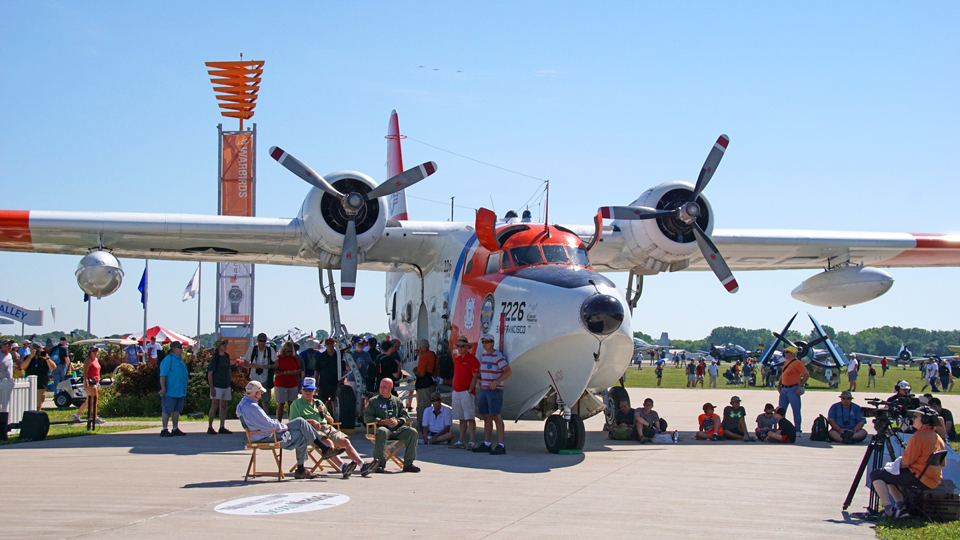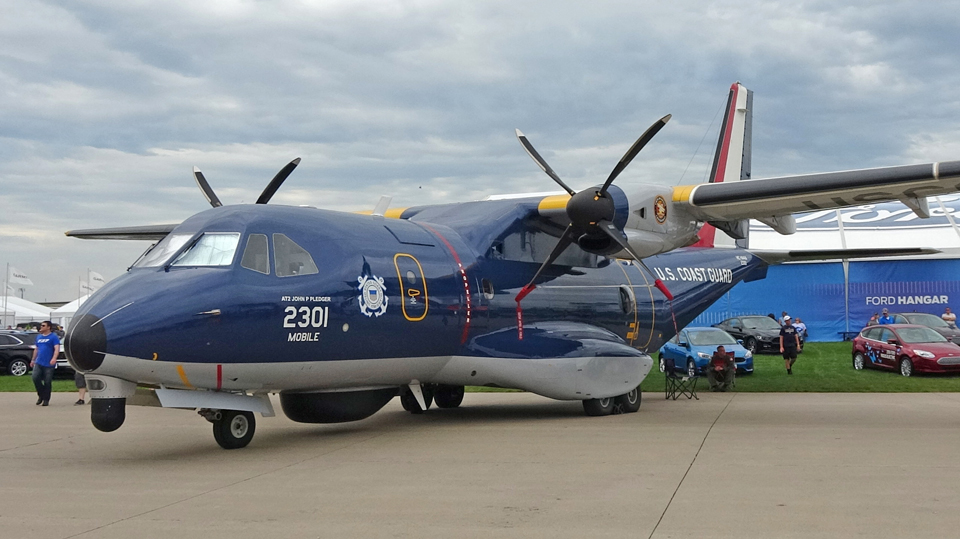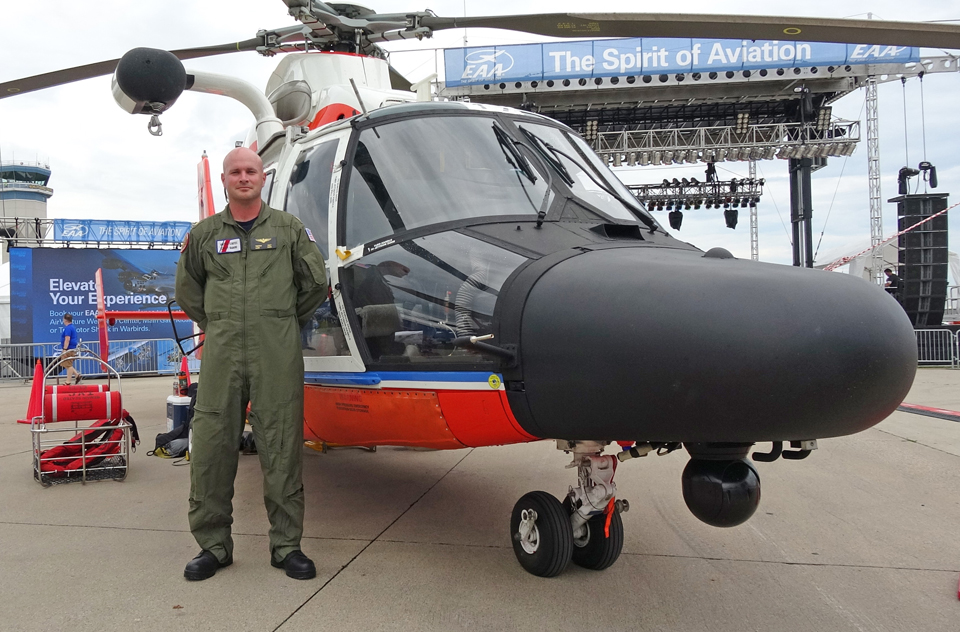Connie Edwards Salutes Coast Guard at AirVenture
July 27, 2016 - When teenager Connie Edwards learned to fly in Texas in the late 1940s, he probably wasn’t thinking he’d one day fly a former U.S. Coast Guard (USCG) aircraft to a huge aviation event to help the men and women of that service celebrate the centennial of Coast Guard aviation.
Yet Edwards’ colorful flying career has crossed paths with the Coast Guard more than once, earning him the respect of the service. In 1986, Connie and his PBY Catalina amphibian, itself a World War II icon, stood in for the historic Curtiss flying boat NC-4 that made the first Atlantic crossing in 1919. Both the U.S. Navy and Coast Guard took pride in that crossing, since it was largely a Navy project using several of the seaplanes, with a Coast Guard flier in the successful NC-4.
At a special Warbirds in Review session this week at EAA AirVenture Oshkosh 2016, Edwards voiced his respect for the Coast Guard as he showed his original Grumman HU-16 Albatross twin-engine amphibian, resplendent in Coast Guard red, white, and blue livery. Edwards was proud to say the Coast Guard gave its blessing when he wanted to refurbish his Albatross in the markings it carried when working for the USCG.
Edwards was joined by moderator David Hartman and Coast Guard Lt. Col. Tim Holt at the warbird session. Holt told the crowd of several hundred that the Coast Guard began flight operations in 1916 with a Curtiss seaplane. Search and rescue was the mission, later growing to embrace coastal sentry, drug interdiction, and safety as core duties today. The Coast Guard of the United States operates under the Department of Homeland Security in peacetime. During war, the USCG gets folded into the U.S. Navy, Holt explained.
In addition to a timely homage to the Coast Guard, this Warbirds in Review session quickly evolved into an appreciation of Wilson “Connie” Edwards and his fabulous flying career. Migrating from a Super Cub to a UC-78 and on through several aircraft, Edwards built his flying experience. “Naturally I was the best pilot in the world,” he told the audience. “When I got to be 18, it was amazing how much talent I had lost.”
Getting older and wiser, 18-year-old Edwards flew a C-47 and C-46 all over Central America. He came to know the locations of warbirds in the inventories of south-of-the-border air forces, and bought them when they were cheap. “At one time I had 15 P-51s,” he recalled. “I’ve never bought an expensive airplane.”
Edwards’ flying prowess came to the attention of the producers of the blockbuster 1969 movie Battle of Britain. Edwards went to filming locations in England and Spain, flying Spitfires, Spanish versions of the Me 109 and He 111 in dramatic aerial sequences. Somebody counted up his repeated onscreen combats, and Edwards said he was “shot down” 128 times in the Messerschmitts, 72 times in Spitfires, and “we lost count” in the twin-engine He 111 bombers.
At the conclusion of filming, Edwards said the movie company was not forthcoming with cash for his work, so he took 17 of the Spanish Me 109s in payment. It may have cost $40,000 to ship them to the United States, but it was worth it.
Edwards recalled one emergency he faced while flying a two-place Spitfire for the film. An engine fire forced a return to base. As the fire continued, Edwards informed the other occupant, a movie person, that they might have to bail out. His passenger balked at that prospect, so Edwards began telling him how to fly the Spitfire in case he found himself alone in it, in an effort to bring the severity of the situation into focus.
England is dotted with World War II airfield sites, and, fortunately, a former B-17 runway in disuse appeared beneath the smoking Spitfire, affording Edwards and his passenger the chance to belly land and save themselves. And the crowd at AirVenture was happy Edwards lived to tell the tale in his own inimitable Texas way.
Coasties Commemorate a Century
The United States Coast Guard has been airborne for 100 years. That colorful century is on display at EAA AirVenture 2016 in the form of several current Coast Guard aircraft, some painted in special historical commemorative color schemes. Other vintage aircraft on the field, such as a civilian-owned HU-16 Albatross amphibian, wear Coast Guard historical markings.
While the aircraft and events honoring the Coast Guard aviation centennial will take place throughout this week, many of the activities are focused on Thursday, July 28. That day’s events will include a large contingent of Coast Guard aircraft, both fixed-wing and rotorcraft, with planeside interviews throughout the day from Coast Guard pilots and aircrews. Some of those aircraft will fly in Thursday’s afternoon air show. A special evening program at Theater in the Woods will highlight the Coast Guard’s aviation history.



